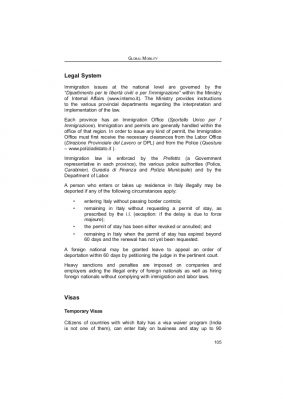The Title VII of the Civil Rights Act of 1964 protects people against discrimination in employment on the basis of race, color, national origin, sex or religion.
It is illegal to discriminate against an employee or an applicant because of their race or color in regard to hiring, separation, advancement, compensation, training, or any other condition, or privilege of employment. Title VII also prohibits employment decisions on the basis of stereotypes or assumptions about the abilities, qualities, or performance of individuals of a certain races.
[alert-note]Title VII prohibits both intentional discrimination as well as the policies of labor neutrals that exclude a disproportionate impact on minorities and are not job-related.[/alert-note]You can not deny the equality of opportunities in employment to be married or partnered with a person of different race, be a member or belong to certain organizations or ethnic groups, to attend or participate in schools or places of worship associated with minority groups, or other cultural practices or characteristics associated with race or ethnicity, such as clothing or cultural forms of expression, provided that the practice, or cultural characteristic, does not interfere essentially with the ability to comply with the labor obligations.
Characteristics and conditions related to the race
Discrimination on the basis of a characteristic, unchanging associated with race, such as skin color, hair texture, or certain facial features, constitutes a violation of Title VII, even when not all members of the race share the same characteristics.
Title VII also prohibits discrimination because of a condition that affects mostly one race, unless it is job-related and consistent with business necessity.
Discrimination by skin color
Although the race and color of skin may be related terms, are not synonymous. Therefore, discrimination on the basis of skin color can occur between people of different races or ethnicities, or between persons of the same race or ethnicity. Although Title VII does not define the term “color,” the courts and the Commission interpret the term “color” with its meaning is commonly known: pigmentation, complexion, complexion or tone. Therefore, discrimination on the basis of the color of the skin occurs when a person is discriminated against by his clear complexion, a dark complexion or other characteristic of color of the person.
Although the plaintiff may prove a claim of discrimination with direct evidence or circumstantial, some courts may determine that if a white person relies on circumstantial evidence to establish a claim for reverse discrimination, must meet a standard of proof more strict.
Employers should adopt “best practices” to reduce the likelihood of a case of discrimination and to address impediments to equal opportunities in the workplace.
Recruitment, hiring and promotion
The job requirements should be applied uniformly and consistently to all people of all races and skin colors. Even if it is applied a requirement to work consistently, if it is not important for job performance or business needs, the requirement may be considered unlawful if it excludes persons of a particular racial group or of a certain skin color more than other people. The examples of practices potentially unlawful include:
- Require applications only from sources in which all or most potential workers are of the same race or color;
- Require that applicants have certain knowledge of education that is not relevant to job performance or business needs;
- To test knowledge, skills or abilities that are not important for job performance or business needs.
Can employers really need information on the race of their employees or applicants to implement affirmative action, or to track the flow of applicants. In order to obtain information on the race and, at the same time, provide protection against a selection-discriminatory manner, can be used forms separately or record information on the race of the applicant separate from the application. That way, the employer can get the information that you need, and ensure that it is not used in the decision.
The other protections of Title VII include:
- Remuneration and other terms, conditions, and privileges of employmentTitle VII prohibits discrimination in respect of remuneration and other terms, conditions, and privileges of employment. Therefore, discrimination on the basis of race or skin color cannot be the justification of differences in payments or benefits, work assignments, performance evaluations, training, disciplinary actions, or layoffs, or any other area of employment.
- HarassmentHarassment on the basis of race or skin color is contrary to the stipulations in Title VII. Ethnic slurs, “jokes,” racial, offensive or derogatory comments, or other verbal or physical conduct related to race or the color of the individual it constitutes a case of unlawful harassment creates a work environment that is intimidating, hostile, or offensive, or if it interferes with the work performance of the individual.
- RetaliationEmployees have the right not to suffer retaliation for opposing an act of discrimination, or for filing a charge, testifying, assisting, or participating in any way in the procedures of a Commission for Equal Opportunities in Employment.
- Segregation and classification of employeesSegregate the employees of a minority by isolating them physically from other employees or from contact with clients constitutes a violation of Title VII. Title VII also prohibits assigning primarily minorities to establishments or geographic areas dominated by minority groups. It is also illegal to exclude minorities from certain positions or to group or categorize employees or jobs so that certain jobs are usually in charge of minorities. Title VII does not allow decisions to be made on the basis of race because of business concerns.
- Questions and requirements prior to employmentRequesting pre-employment information which discloses or tends to disclose the race of the applicant suggests that the relevant information to the race will be used unlawfully as a factor of recruitment. It is presumed that the requested information prior to employment will be used as the basis for selection. Therefore, if members of minority groups are excluded from employment, the request pre-employment information would likely be considered evidence of discrimination.
Legal help with a claim for discrimination
If you believe you have been discriminated against by an employer or potential employer, either as an applicant or employee, it is important that you discuss the situation with a lawyer who specializes in labor law to better safeguard their legal rights. In view of the time limits of the filing of the EEOC mentioned above, find a lawyer as soon as possible will ensure that you do not lose your right to a legal remedy.










